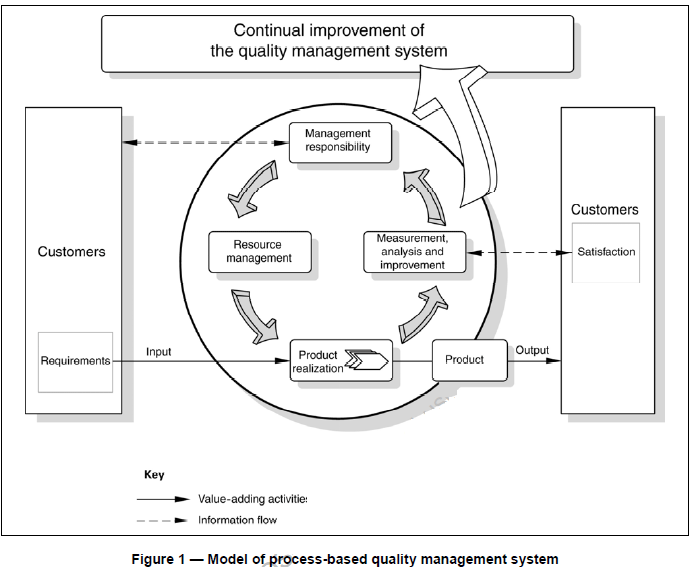ISO/TS 29001 Petroleum, petrochemical and natural gas industries
0.1 General
Ever since the first oil-well was drilled in 1859, oil production has become a continuously complex and detailed process.
The ISO/TS 29001:2010 is quality management system that provides requirements for the design, development, production, installation, and service of products for the petroleum, petrochemical, and natural gas industries. This standard is designed to help these organizations ensure that they meet all requirements of customers and stakeholders.
The ISO/TS 29001:2010 standard is based on ISO 9001, and includes supplementary requirements highlighting defect prevention and the reduction of deviation and waste from service providers.
The ISO/TS 29001:2010 was developed as the result of cooperation between the American Petroleum Institute (API) and ISO technical committee ISO/TC 67
The adoption of a quality management system should be a strategic decision of an organization. The design and implementation of an organizationвҖҷs quality management system is influenced by varying needs, particular objectives, the products provided, the processes employed and the size and structure of the organization. It is not the intent of this International Standard to imply uniformity in the structure of quality management systems or uniformity of documentation.
The quality management system requirements specified in this International Standard are complementary to requirements for products. Information marked вҖңMoteвҖқ is for guidance in understanding or clarifying the associated requirement.
This International Standard can be used by internal and external parties, including certification bodies, to assess the organizationвҖҷs ability to meet customer, regulatory and the organizationвҖҷs own requirements.
The quality management principles stated in ISO9000 and ISO9004 have been taken into consideration during the development of this International Standard.
0.2 Process approach
This International Standard promotes the adoption of a process when developing, implementing and improving the effectiveness of a quality management system, to enhance customer satisfaction by meeting customer requirements.
For an organization to function effectively. It has to identify and manage numerous linked activities. An activity using resources, and managed in order to enable the transformation of inputs into outputs into outputs, can be considered as a process. Often the output from one process directly forms the input to the next
The application of a system of processes within an organization, together with the identification of these processes, and their management, can be referred to as the вҖңprocess approachвҖқ.
An advantage of the process approach is the ongoing control that it provides over the linkage between the individual processes within the system of processes, as well as over their combination and interaction.
When used within a quality management system, such an approach emphasizes the importance of
a) understanding and meeting requirements,
b) the need to consider processes in terms of added value,
c) obtaining results or process performance and effectiveness, and
d) continual improvement of processes based on objective measurement.
The model of a process-based quality management system shown in Figure 1 illustrates the process linkages presented in clauses 4 to 8. This illustration show that customers play a significant role in defining requirements as inputs. Monitoring of customer satisfaction requires the evaluation of information relating to customer perception as to whether the organization has met the customer requirements. The model shown in Figure 1 covers all the requirements of this International Standard, but does not show processes at a detailed level.
Note : In addition, the methodology known as вҖңPlan вҖ“ Do вҖ“ Check вҖ“ Act (PDCA) can be applied to all processes. PDCA can be briefly described as follows.
| Plan |
Establish the objective and processes necessary to deliver result in accordance with requirements and the organizationвҖҷs policies |
| Do |
Implement the processes. |
| Check |
Monitor and measure processes and product against policies, objectives and requirements for the product and report the results. |
| Act |
Take actions to continually improve process performance. |

|